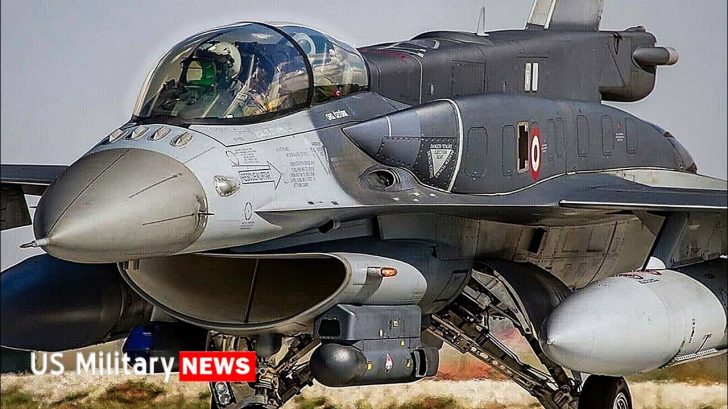Widely recognized as one of the most successful and versatile jet fighters ever produced, the F-16 Fighting Falcon continues to serve 25 other countries around the world. A testament to the aircraft’s enduring popularity and effectiveness.
Still Going Strong
Despite being first introduced in the 1970s, the 4th-generation fighter is still able to keep up with the times, remaining in service for a few more years to come. Since entering service, the warbird has engaged in more than 400,000 combat sorties plus a combined 19 million flight hours total! One of the fighter’s key advantages in combat is its speed and agility, making it a formidable fighter in air-to-air combat situations. After all, the F-16 was the first fighter purposely built to pull 9G maneuvers and can reach speeds of over Mach 2.
Unique Features
The single-piece, polycarbonate bubble canopy fitted into the F-16 provides all-around visibility in addition to a 40-degree look-down angle on both sides and 15 degrees on the nose. Moreover, the canopy lacks the forward bow frame (usually found on most fighters) which could obstruct the pilot’s forward vision.
A major step towards upgrading the F-16 came on January 9, when a facility in Baltimore completed the installation of the new and powerful AN/APG-83 Scalable Agile Beam Radars (SABR) into the nosecones of F-16Cs and Ds.
The APG-83 is mostly based on the APG-81 radar installed in the new F-35 stealth fighters, albeit scaled down for affordability and compatibility.
Wide Range of Weapon Capabilities
Its nine hard points provide flexibility for a variety of mission requirements, including air-to-air and air-to-surface operations. For air-to-air, the F-16 can carry the AIM-9 Sidewinder, AIM-120 AMRAAM, AIM-7 Sparrow, Rafael Python, and the improved AIM-9X Sidewinder.
For air-to-ground missions, the Falcon can make use of the AGM-65 Maverick, AGM-88 HARM, AGM-158 JASSM, and AGM-154 JSOW. In addition, the F-16 can also use anti-ship missiles such as the AGM-84 Harpoon and AGM-119 Penguin. Meanwhile, bombs like SDBs, JDAMs, and Paveways can also bring in the heat if needed.
To top it off, the F-16 comes equipped with a 20mm General Electric M61A1 multi-barrel cannon that is mounted on the left side of the fuselage. The gun has a firing rate of approximately 6,000 rpm and is usually reserved for close-range engagements.
Many Variations
The F-16A/B is the initial production version of the F-16 and is the most numerous of all F-16 variants with 475 produced. AIM-7s, AIM-120s, improved radar, and cockpit avionics were later installed in the C/D version.
The US Navy also operated another version of the F-16, called the F-16N. The adversary aircraft was based on the C/D Block 30 and is capable of supercruise. It was used by the Navy’s Top Gun training program but was retired from service in 2018.
Latest Variant
Still, the latest and most advanced F-16 on the market today is the F-16V Viper. It was first unveiled at the Singapore Airshow in 2012 and has been in service since 2017. The new variant features an AESA radar, a new mission computer and electronic warfare suite, and various cockpit improvements.
With how many improvements the F-16 has been getting lately, no wonder people are hopeful it stays in service longer.


